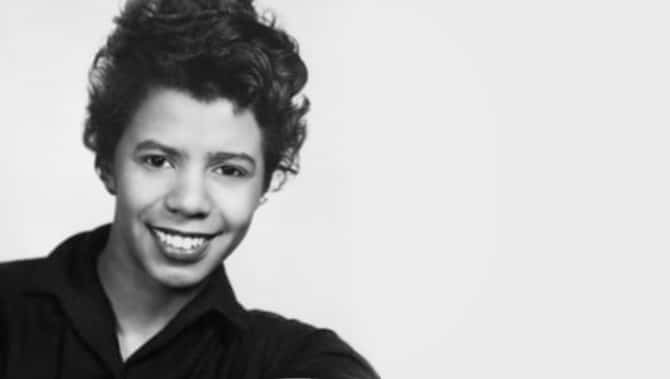“Her creative ability…will remain an inspiration to generations yet unborn.”
“Oh — So now it’s life. Money is life. Once upon a time freedom used to be life — now it’s money. I guess the world really do change…” — Mama inA Raisin in the Sun
As a special education English teacher in Baltimore City, I’ve taught more than ten books to my students. Some of the books did not make my students engaged, although I’ve credited that disinterest more to how I taught them. This time, in the time of a pandemic and virtual learning, it’s different. And I credit that to the play I’m teaching —Lorraine Hansberry’s A Raisin in the Sun. It is the first Broadway play written by a Black woman.
It is the only book where all the characters come alive for us. And it’s the most discussions I’ve had in my classroom too, with some of my students liking some characters, and some of my students liking other characters. They debate and argue about who’s right during any family argument or conflict.
The premise of A Raisin in the Sun is the father of the family, Big Walter Younger, dying in the 1950s. His death leaves behind a $10,000 insurance check for the family that offers the family a gateway out of poverty. The family lives in an apartment on the south side of Chicago where Big Walter’s grandson needs to sleep on the couch, where the kitchen is small, and the family jostles with other families in the complex to be able to use the bathroom in the morning.
While all members of the family want to lift the family out of poverty, they all have different ideas and means to accomplish their dreams. Walter, now the only man in the family, is an aspiring businessman and entrepreneur and wants to use the insurance money to own a liquor store. Beneatha is the only one seeking higher education, with aspirations of going to medical school. She grapples with her identity as a Black, educated woman who wants to find her identity in a different way than the other women in the family. Mama, midway through the book, uses some of the insurance money to buy a house in Clybourne Park, an all-white neighborhood. There, they face the brunt of housing segregation and discrimination in the hostility of white neighbors. However, the whole family unites in refusing to back down.
We aren’t finished with the book yet, but in A Raisin in the Sun, my students have found Walter and Beneatha to be the most enthralling, complicated, and divisive characters. Some of my students think Walter is doing the best he can, but his self-destructive behavior and poor treatment of his wife, Ruth, and the rest of the family lead to him being unsympathetic to others. Some of my students think Beneatha acts like she’s better than the rest of the family. Some find her sense of self-righteousness unappealing, while others believe she has the right to act that way since she has the most promise for the Younger family’s future.
While the play enthralls my students, what we haven’t focused on as much is the real-life inspiration behind the play: Lorraine Hansberry’s own family.
According to Biography, Hansberry’s father, Carl Augusts Hansberry, was a crusader against segregation. She was the youngest daughter of him and his wife, Nannie Louise Hansberry. Her father was a real estate broker, and her mother was a teacher and committeewoman.
The conflict that precipitated A Raisin in the Sun was in 1938 when her father bought a house in the Washington Park neighborhood of the South Side of Chicago, near the University of Chicago. According to Steven R. Carter in the Society for the Study of the Multi-Ethnic Literature of the United States, white neighbors hostile to a Black family moving into the community threw bricks and concrete slabs through the windows. = In the Ilinois courts, the Hansberry family was evicted from their homes due to restrictive racial housing covenants, with suits bought by residents like Anna M. Lee. According to Lyonette Louis-Jacques at the University of Chicago Library, Lee and some other residents of the Washington Park neighborhood agreed that no real estate could be “sold, leased to, or permitted to be occupied by any person of the colored race.”
Later, Carl Augusts Hansberry and the NAACP legal team filed a case in the Supreme Court named Hansberry v. Lee in 1940. They would be represented by attorney Earl B. Dickerson, a member of the NAACP litigation team, who helped the Hansberry family achieve a victory against restrictive racial housing covenants. But the Supreme Court victory was not the end of the battle for Hansberry’s family — Hansberry’s father would pass away from a cerebral hemorrhage on March 7, 1946, at 50, in Mexico. Louis-Jacques states that Carl Augusts Hansberry planned to move his family there.
Lorraine Hansberry went to kindergarten on the south side of Chicago, and mobs frequently attacked her home. One time, a brick went through her window and just missed her head. She would meet several civil rights leaders like W.E.B. Du Bois throughout her childhood. Her own uncle, William Leo Hansberry, founded the African Civilization Department at Howard University. In 1948, she graduated from Englewood High School. She worked for social justice and was politically active most of her life, being the associate editor for Freedom, a progressive Black newspaper. From her uncle, Hansberry was taught, according to Melissa Anderson at The Village Voice:
“Above all, there were two things which were never to be betrayed: the family and the race.”
While she was younger, according to Vinson Cunningham at the New Yorker, Hansberry sent the following manifesto to her boyfriend and later husband:
1. I am a writer. I am going to write.
2. I am going to become a writer.
3. Any real contribution I can make to the movement can only be the result of a disciplined life. I am going to institute discipline in my life.
4. I can paint. I am going to paint.
The END
In 2018, Imani Perry wrote a biography of Hansberry called Looking for Lorraine. Her breakout piece of work was most certainly A Raisin in the Sun, and Perry emphasizes how much the play was a game-changer. Branden Jacobs-Jenkins says:
“You could probably divide American drama into before ‘Raisin’ and after.”
Her influence ranged far and wide, and Jacobs-Jenkins suggests there would be no Spike Lee, Shonda Rhimes, and Donald Glover had there been no Lorraine Hansberry. When she was in college at the University of Wisconsin in Madison, she studied painting and sculpture. She acted and also fought to integrate a women’s dorm. However, Jacob-Jenkins notes:
“And yet next to nothing is broadly known about her life, beyond the facts that she was black and a woman and, maybe, that she was a communist and queer.”
Perry sought to dismantle the “persistent flatness” that people barely knew anything about Hansberry’s life. Throughout her life, Hansberry had a plethora of influential contemporaries, including Nina Simone, who she talked communism with. She was friends with James Baldwin, who was an “intellectual sparring partner” for her. In 1963, Robert F. Kennedy invited Hansberry and other “influential” Black figures to discuss racial unrest in Birmingham, Alabama.
“As Baldwin later recalled it, Hansberry, with growing irritation, scolded Kennedy for failing to see racial injustice as a moral rather than social problem, and the evening ended with her walking out,” Jacob-Jenkins said.
Imani Perry notes that Hansberry published pseudonymously in lesbian magazines, but that her calling to be a writer happened almost completely by mistake. She dropped out of college at Wisconsin then moved to New York to work for Freedom. She essentially moved from the visual arts to the literary arts and had possible lovers there. In New York, she had a romantic relationship with a woman named Dorothy Secules, a tenant in Greenwich Village with Hansberry.
And yet Jacob-Jenkins is critical of Perry for not going far enough in her biography. Margaret B. Wilkerson is widely known as the leading scholar on Hansberry. Wilkerson says that Hansberry’s life yielded five plays, and most often went underappreciated due to the hit popularity of A Raisin in the Sun. One autobiographical play, To Be Young, Gifted, and Black, was published posthumously, a play adapted from her own writings.
On January 12, 1965, Hansberry died of pancreatic cancer. Her funeral was three days later, on January 15, 1965, in Harlem, New York. At her funeral, Martin Luther King said:
“Her creative ability and her profound grasp of the deep social issues confronting the world today will remain an inspiration to generations yet unborn.”
All that being said, A Raisin in the Sun is certainly not a bad play to have your career defined by. I’ve seen students who have never participated or shown their face in virtual learning become animated when we talk about scenes of the play, who strongly disagree whenever we talk about Ruth, Beneatha, Mama, or Walter. I have seen my students debate what it means to be a man and whether Walter’s struggle to be head of the family is noble or selfish. Like a character or not, my students are engaged in a way they’ve never been before — and none of it would have been possible had it not been for Lorraine Hansberry.


